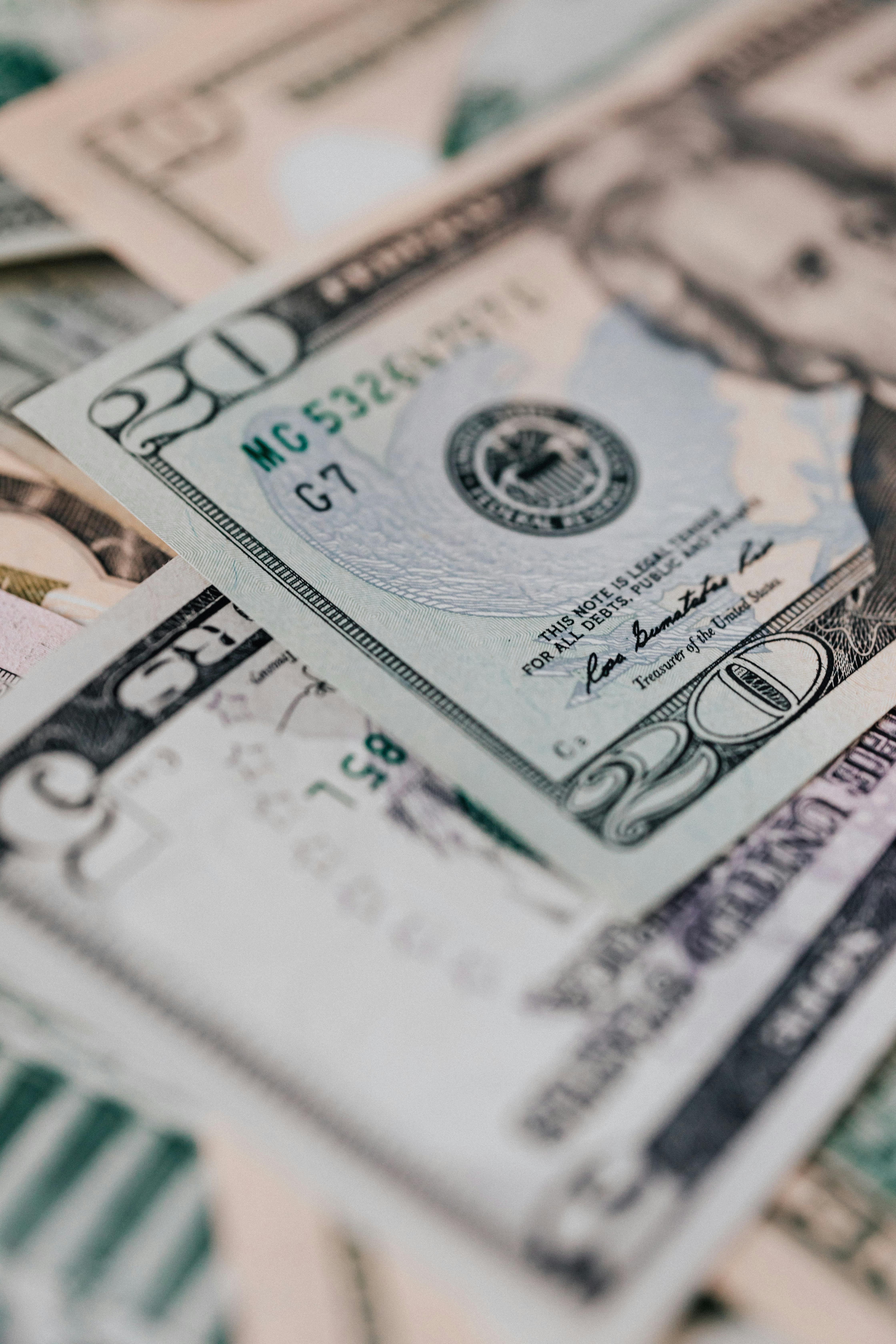Safe Investment Options for Beginners in 2025
For beginners, investing can seem risky, but safe investment options exist to grow your money steadily. This guide covers bonds, ETFs, high-yield savings accounts, and more to minimize risk while earning returns.
Understanding Safe Investments
Safe investments prioritize capital preservation and low volatility, suitable for beginners or conservative investors. Key features include predictable returns, government backing, or diversified exposure.
Top Safe Investment Options
1. High-Yield Savings Accounts
- Interest rates around 3–5% annually.
- FDIC-insured in the U.S.
- Immediate liquidity for emergencies.
2. Certificates of Deposit (CDs)
- Fixed interest over a defined term (3–60 months).
- Guaranteed returns with low risk.
- Penalties for early withdrawal.
3. Government Bonds
- U.S. Treasury bonds, bills, and notes offer secure returns.
- Low default risk.
- Suitable for long-term, stable income.
4. Bond ETFs
- Diversified exposure to multiple bonds with one investment.
- Low fees and predictable income.
- Ideal for beginners seeking stability.
5. Dividend-Paying Stocks
- Stable companies with consistent dividends.
- Combination of moderate growth and passive income.
- Suitable for conservative investors willing to accept minimal volatility.
Portfolio Example for Beginners
Example allocation for $10,000 beginner portfolio:
| Investment | Allocation | Notes |
|---|---|---|
| High-Yield Savings | $3,000 | Emergency fund and liquidity |
| Government Bonds | $3,500 | Safe, predictable returns |
| Bond ETFs | $2,000 | Diversified fixed income |
| Dividend Stocks | $1,500 | Moderate growth + income |
Tips for Safe Investing
- Diversify across assets to reduce risk.
- Start small and gradually increase investment.
- Stay consistent and avoid panic selling.
- Reinvest dividends to accelerate growth.
- Keep learning and monitoring financial news.
Conclusion
Safe investments allow beginners to grow wealth steadily without excessive risk. By using a mix of savings accounts, bonds, ETFs, and dividend stocks, you can build a secure, diversified portfolio that generates income and protects capital.
Safe Investment Options for Beginners in 2025
Your guide to building wealth with low-risk investment strategies that balance growth, security, and confidence in 2025.

Investing doesn’t have to be complicated or intimidating. In 2025, with economic volatility, rising interest rates, and the continued dominance of digital finance, many beginners are seeking **safe, stable investment options** that protect their money while still delivering meaningful returns. This guide breaks down the most reliable, beginner-friendly investment choices available this year — from savings accounts to smart ETFs — along with practical advice on how to balance **risk, reward, and accessibility**.
1. Understanding “Safe” Investments in 2025
The term “safe investment” doesn’t mean “no risk.” It means **minimized volatility**, **predictable returns**, and **low exposure to market shocks**. In 2025, safe investing revolves around three key pillars:
- Capital Preservation: Your initial money is protected or insured.
- Steady Yield: You earn consistent interest or dividends over time.
- Liquidity: You can access your money when needed without penalty.
Safe investments work best for new investors who prioritize financial security over aggressive growth. They’re ideal for building emergency funds, short-term goals, or preparing for later diversification into stocks or real estate. If you’re still learning, you might also explore A Beginner’s Guide to Passive Income for additional context on balancing savings with returns.

🔹 Why 2025 Is Different
Unlike earlier years, 2025 presents a unique mix of high interest rates, moderate inflation, and accessible online investment platforms. This combination means beginners can now **earn decent returns safely** — something that was rare just a few years ago. For instance, high-yield savings accounts and government bonds are finally competing with stock portfolios for short-term returns.
This shift mirrors the broader transformation discussed in The Future of Banking in America (2025–2030), where digital finance tools give small investors institutional-level access.
2. High-Yield Savings Accounts: The Foundation of Safety
High-yield savings accounts (HYSAs) are the **safest and most liquid investment option** available today. Offered by both traditional banks and fintech platforms, they provide interest rates between 4%–5% annually in 2025 — often outperforming short-term bonds.

🏦 Key Benefits
- FDIC or NCUA Insurance: Protects deposits up to $250,000 per bank.
- Instant Liquidity: Access your funds anytime without penalty.
- No Market Risk: Your balance never decreases.
💡 Pro Tip
To maximize returns, choose an account with **automatic transfers** from your checking balance and no monthly fees. Digital-first banks like Ally, SoFi, and Marcus by Goldman Sachs offer higher yields than traditional institutions.
If you’re already using mobile finance tools, you might also explore Mobile Banking Apps — Features, Fees, and Hidden Risks for a complete comparison of modern savings options.
3. Certificates of Deposit (CDs): Fixed Returns with Zero Guesswork
Certificates of Deposit (CDs) remain a favorite for risk-averse investors in 2025. They lock your money for a specific term (3 months to 5 years) in exchange for a fixed interest rate — currently ranging from 4.2% to 5.5%.

📊 Why CDs Are Still Relevant
In uncertain markets, CDs guarantee returns regardless of stock market performance. This makes them ideal for **short-term savings goals** like tuition, wedding funds, or home down payments.
- Minimum Risk: FDIC-insured, principal protected.
- Predictable Returns: Know exactly how much you’ll earn.
- Ladder Strategy: Split CDs by maturity dates to maintain flexibility.
If you’re building a layered financial plan, check out Best Investment Strategies 2025 to see how CDs complement diversified portfolios.
4. U.S. Treasury Bonds and T-Bills: Government-Backed Safety
If you’re looking for a near-zero-risk investment in 2025, U.S. Treasury Bonds (T-Bonds) and Treasury Bills (T-Bills) remain unmatched. They are **backed by the full faith and credit of the U.S. government**, making them one of the safest ways to grow your money gradually.

With inflation cooling and yields holding strong, 2025 offers investors average returns between 4.8% and 5.3% for 10-year Treasuries. Even short-term T-Bills (3 to 12 months) yield more than most bank accounts. This is particularly beneficial for **beginners who prefer stability over speculation**.
💰 How to Invest in Treasuries
- Use TreasuryDirect.gov to buy bonds directly from the U.S. government.
- Alternatively, buy Treasury ETFs like SHV, VGSH, or IEF for easier liquidity.
- Hold long-term bonds to benefit from compounding interest without market volatility.
These low-risk instruments are perfect for anyone beginning their journey toward financial independence. If you’re already exploring advanced diversification, see Investing in 2025: How Predictive Intelligence Is Redefining Wealth Strategy for more insights on long-term portfolio modeling.
5. Money Market Funds: Smart Cash Alternatives
Money Market Funds (MMFs) have made a comeback in 2025. They’re designed for investors who want **safety with slightly higher returns than a savings account** — typically around 4%–5% annual yield — while still maintaining high liquidity.

These funds invest in short-term, low-risk debt securities such as government bonds, CDs, and commercial paper from financially stable institutions. They’re widely used by corporations, high-net-worth individuals, and now — thanks to digital platforms — **everyday investors**.
⚖️ Why Beginners Should Consider MMFs
- Low volatility with consistent yield growth.
- Daily liquidity with no lock-in period.
- Managed by financial institutions with decades of experience.
While not FDIC-insured like savings accounts, MMFs are among the most secure investment options due to strict regulation under the SEC. For example, Vanguard Federal Money Market Fund (VMFXX) and Fidelity Government Cash Reserves (FDRXX) are two of the top-performing funds in 2025.
If you’re curious how these compare to traditional deposits, check High-Yield Savings Accounts — Best Options & Rate Comparison Guide.
6. Diversified Index Funds and ETFs: The “Smart Beginner” Path
For beginners ready to explore beyond cash-based options, **index funds and ETFs** offer safe yet growth-oriented exposure to the stock market. These funds track broad market indexes — like the S&P 500 or Total Stock Market — and are diversified across hundreds of companies, reducing single-stock risk.

📈 Why They’re Great for 2025
- Automatic Diversification: One purchase gives you exposure to entire sectors.
- Low Fees: Expense ratios as low as 0.03%.
- Compounding Power: Ideal for long-term growth even with small monthly contributions.
Some of the safest and most trusted beginner ETFs include:
- Vanguard S&P 500 ETF (VOO)
- Schwab U.S. Broad Market ETF (SCHB)
- iShares Core U.S. Aggregate Bond ETF (AGG)
For those exploring modern portfolio systems, Smart Investing in 2025: How Everyday People Build Wealth with AI and ETFs offers deeper insights into automating investments for stability and compounding gains.
7. Real Estate Investment Trusts (REITs): Safe Entry into Property Markets
For beginners who want exposure to real estate without buying property directly, **REITs (Real Estate Investment Trusts)** are an excellent low-barrier option in 2025. They let you invest in commercial properties — such as apartments, malls, hospitals, or warehouses — and earn dividends from the rent collected, without the headaches of being a landlord.

In 2025, the **top-performing REITs** focus on logistics (warehouses), healthcare, and residential sectors, as these markets show consistent rental demand and inflation resilience. Average dividend yields range from 4.5% to 6.5% annually — much higher than bonds or savings accounts.
🏢 Popular Beginner-Friendly REITs
- Vanguard Real Estate ETF (VNQ) — diversified U.S. property exposure.
- Realty Income Corp (O) — “The Monthly Dividend Company,” known for stable payouts.
- Prologis (PLD) — global leader in logistics and industrial property REITs.
For more on building income through property, read Real Estate Investment 2025: Best Cities and Strategies for High ROI.
8. Dividend Stocks: Building Long-Term Wealth the Conservative Way
Dividend-paying stocks are among the most dependable ways to build long-term income. They offer **steady cash flow** through quarterly dividends while your underlying investment appreciates in value. For 2025, experts recommend focusing on **“Dividend Aristocrats”** — companies that have increased payouts for at least 25 consecutive years.

📊 Top Dividend Categories for 2025
- Consumer Staples: Companies like Procter & Gamble (PG) and Coca-Cola (KO).
- Healthcare: Pfizer (PFE), Johnson & Johnson (JNJ).
- Utilities: Duke Energy (DUK), Consolidated Edison (ED).
Dividend stocks blend **income stability with capital growth**, making them ideal for investors transitioning from saving accounts into low-volatility equities. If you’re exploring diversification, check Best Investment Strategies 2025: Stocks, ETFs, and Crypto Compared.
9. Robo-Advisors: Automated Investing for Beginners
Robo-advisors have become the **preferred platform for beginner investors in 2025**. These AI-driven systems automatically build and rebalance diversified portfolios based on your goals, risk tolerance, and timeline. They combine convenience, affordability, and data-driven decision-making.

🤖 Top Robo-Advisors for 2025
- Betterment: Best overall for goal-based investing and low fees.
- Wealthfront: Strong for automated tax-loss harvesting.
- Fidelity Go: Excellent for beginners who want brand-backed safety.
These tools eliminate emotional bias and ensure your money grows consistently. Many even include options for sustainable or ESG portfolios — a growing trend highlighted in Investing in Green & ESG Funds 2025: Profits with Sustainability.
10. Building a Safe Beginner Portfolio in 2025
By now, you’ve seen how many stable investment avenues exist — but the real power lies in **how you combine them**. A balanced beginner’s portfolio should aim to preserve capital while earning consistent returns.
📘 Example Portfolio Allocation (Low-Risk Beginner – 2025)
| Investment Type | Percentage Allocation | Purpose |
|---|---|---|
| High-Yield Savings / CDs | 30% | Emergency fund & liquidity |
| U.S. Treasuries / Bonds | 25% | Capital protection & stable yield |
| Index Funds & ETFs | 20% | Diversified long-term growth |
| REITs & Dividend Stocks | 15% | Regular income stream |
| Robo-Advisors / ESG Funds | 10% | Automated diversified investing |
This balanced structure ensures your capital grows steadily with minimal exposure to market downturns. Once you gain more confidence, you can gradually shift part of your portfolio toward moderate-growth assets like ETFs and REITs.
11. Common Mistakes Beginners Make When Choosing Safe Investments
Even the safest investment can fail to meet your goals if managed incorrectly. In 2025, many beginners make simple yet costly mistakes — often because they underestimate how market conditions, inflation, and timing affect returns.

- 1. Chasing high returns: Many fall for “too good to be true” offers with hidden risks.
- 2. Ignoring inflation: A 3% return means little when inflation runs at 4%.
- 3. Keeping all funds in cash: Safety doesn’t mean inactivity — your money must work for you.
- 4. Over-diversifying too early: Beginners often invest in too many products, making it hard to track results.
- 5. Skipping emergency savings: Investing without a safety net leads to forced withdrawals during crises.
If you want to avoid such traps, explore Top Mistakes People Make When Buying Investments — it breaks down real-world investor errors and how to prevent them.
12. How to Progress from Safe Investor to Smart Investor
Safe investing is only the beginning of your financial journey. Once you build trust in the system and understand market behavior, you can slowly add growth-oriented assets. Here’s how to transition strategically:
🪜 Step-by-Step Progression Plan
- Start with: High-yield savings and CDs (build a 6-month emergency fund).
- Add: Treasury Bonds and Money Market Funds for steady passive income.
- Expand: ETFs and Dividend Stocks for slow, consistent capital growth.
- Advance: Use Robo-Advisors to automate monthly investing habits.
- Optimize: Diversify into REITs or ESG funds for inflation protection and sustainability.

To deepen your portfolio-building skills, read Smart Investing in 2025: How Everyday People Build Wealth with AI and ETFs.
13. Case Study: Sarah’s Path from Saver to Investor
Let’s meet Sarah, a 29-year-old teacher who started investing in January 2023. She began with $8,000 in a savings account and a clear goal: **grow her money safely without financial stress**.

Her Strategy:
- 30% in a high-yield savings account for liquidity.
- 25% in Treasury Bonds (average yield: 4.8%).
- 20% in broad-market ETFs (S&P 500 exposure).
- 15% in Dividend REITs for monthly income.
- 10% managed through a robo-advisor.
By late 2025, her portfolio grew by **8.7% annually**, outperforming inflation while keeping near-zero volatility. Her key takeaway: “I learned that safety doesn’t mean standing still — it means choosing stability with purpose.”
This mirrors the sustainable wealth model explored in Investing in 2025: How Predictive Intelligence Is Redefining Wealth Strategy.
14. Final Thoughts: Financial Freedom Starts with Safety
In 2025, you don’t need to chase risky assets to build wealth. You only need consistency, patience, and a well-structured plan. Safe investments are the foundation — they help you protect your capital, earn steady income, and gradually transition into more rewarding opportunities as your confidence grows.

Remember — every great investor started as a cautious beginner. Your goal isn’t just to grow your money — it’s to understand it. Stay informed, stay disciplined, and use technology to make decisions that work for your financial future.

